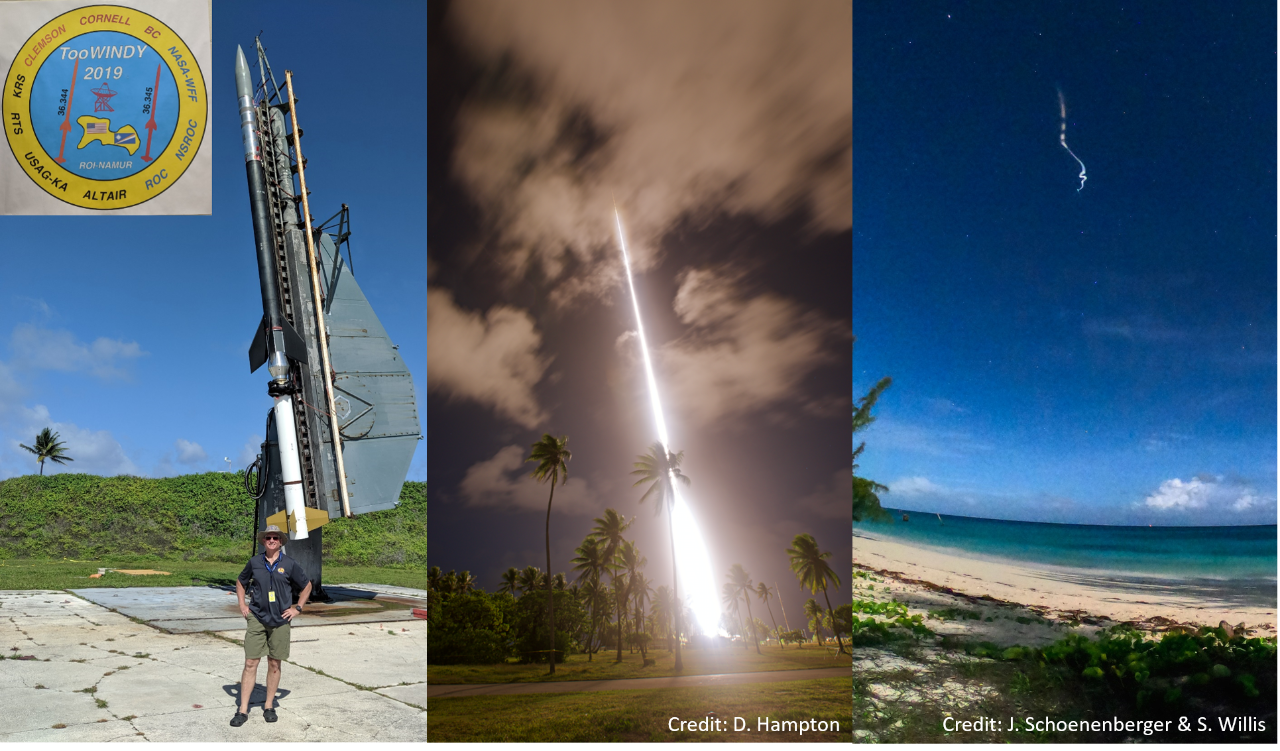

School Notes
Date posted: Jun 19, 2019

Keith Groves, a Senior Research Physicist in BC’s Institute for Scientific Research, took part in the launch of the Too-WINDy experiment from the Kwajalein Atoll in the Marshall Islands last week. Too-WINDy is the 2nd flight of the Waves and Instabilities from a Neutral Dynamo (WINDy) project. Dr. Groves of Boston College, an expert in ionospheric storms, assisted the project lead, Dr. David Hysell of Cornell University, with key scientific support using the ALTAIR radar. Clemson University scientists are also part of the WINDy team, which was supported by NSROC and NASA-WFF.
For the study, NASA launched a pair of Black Brant IX sounding rockets from Roi-Namur on June 19, 2019 carrying instruments to investigate disturbances in the upper atmosphere that can interfere with communication and navigation systems. The first rocket released small amounts of tri-methyl aluminum (TMA) at altitudes between 50 and 112 miles and then lithium between 155 and 210 miles. The glow from these gases can be used to trace the wind speed and direction in the region where ionospheric storms occur, and can be visible for about half an hour before dissipating harmlessly in the atmosphere. The second rocket, also a Black Brant IX, was launched a few minutes after the first and measured the ionospheric density as well as the electric and magnetic fields present in the same region.
After packing up their equipment, the team headed back home to the mainland to analyze their data. The goal is to determine the conditions that lead to disruptions and eventually develop tools to forecast their occurrence, mitigating the storm hazards in our technology-dependent society.
Left: Dr. Keith Groves awaits the launch of Too-WINDY near the Black Brant 9 rocket at the Kwajalein Atoll, where the experiment took place.
Center: Launch of Too-WINDy 19 June 2019. Photo courtesy of D. Hampton, U Alaska, and used with permission.
Right: The TMA release from the first rocket. The turbopause (mesopause) is marked by the turbulent zigzag above which the trail shows smoother variations in the thermosphere. A full Moon and a good photographer combined for the apparently well-lit conditions. Photo courtesy of Jon Schoenenberger and Sarah Willis and used with permission.